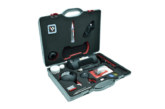
Following MAM Software’s advisory article about launching an e-commerce website in the previous issue, Giles Greenslade, the company’s business development director for e-commerce, is back to help those making those all-important first steps into the online domain.
1- Choose a fully integrated e-commerce solution
One of the best decisions business owners can make is to choose a website that will directly integrate with its ERP solution. Details, such as stock and pricing will automatically be reflected from the core ERP to the online portal in real time, which not only removes the need to manually carry out the same task in two different places, but also provides the customer with precise up-to-date information.
Giles said: “The website should be able to work within your business and provide the synergy needed to realise its full potential. Your company doesn’t want to have to change its processes to work around a non-integrated e-commerce solution!”
2- Select a solution that’s designed for the automotive industry
The e-commerce platform should be easy to use for both business and customers. Choosing a partner that not only understands selling online, but also the automotive industry, can ensure the site is as relevant to the customer as possible.
Simplicity in terms of administration, reporting and maintaining the site should be considered an essential component, and it’s made far easier with a synergetic partner.

The content management system will reflect this need, as an off-the-shelf website will offer “numerous options that are completely irrelevant to the customer”, noted Giles. An industry-tailored content management system will make it simpler to operate on a day-to-day basis.
3- See the website as an extension of the existing business
Establishing an e-commerce website is “essentially like opening a new branch” – and needs to be treated as such:
“It’s not enough just to build a new website,” explained Giles. “You could have an industry-leading website, but if nobody knows it’s there, then it is unlikely to generate the desired return on investment.”
Therefore, marketing is essential to the website’s success and should form an integral part of any e-commerce strategy. Any interaction with a customer or prospect should be viewed as a chance to promote the site, whether that be through flyers, van signage, online ads, magazine adverts or other methods. Businesses shouldn’t just focus on digital marketing simply because their branch is online!
4- Think about customer service
“Although an e-commerce site may remove the human element, it still needs to be thought of as another salesperson in its own right. Customers today are probably better informed than ever before, and a site that passes on knowledge will be seen as a valuable resource in attracting repeat business,” Giles indicated.
Businesses are effectively allowing customers to see their shop-front and place orders outside of standard trading hours. In doing so, they’re providing a more complete shopping experience. A common side effect is that footfall in store also increases; this could be due to the option of Click & Collect, or simply letting the customer know they have the product available, even though they may still want to visit in person.
5- Don’t be afraid to try something new!
E-commerce provides another route to market. The use of online shopping has accelerated exponentially over the past 12 months and shows no sign of slowing. As a result, a good site should support and accelerate business growth in the digital age:
“Mobile and tablet usage underlines the shift in technology application in real-world business operations. The days of having to make a call to source a part while on a job are gone. The ability to find the part, check stock availability and pricing, and place an immediate order, is now an essential component of doing business,” Giles added.







